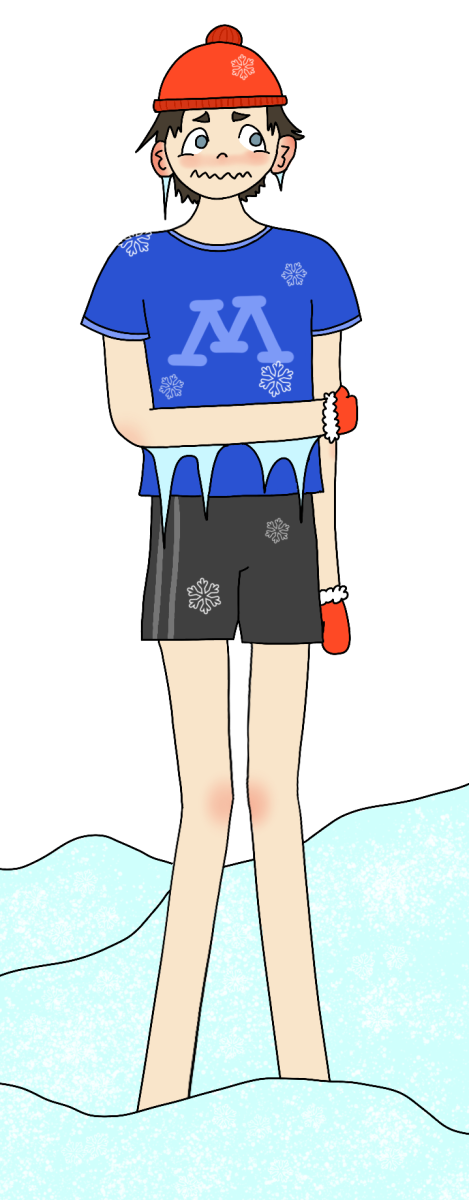Minnesota weather is fickle, and preparing for it can be tricky. One day it’s sixty degrees out, the next it’s below freezing. Five outfits for a school week can consist of both t-shirts and winter jackets, sandals and boots, or shorts and long pants. Sometimes, that’s a little too much coordination, especially when trying to balance both style and comfort in regards to the weather, and it’s easy to completely forego the latter. Unfortunately, as it gets into the winter months, that’s not always as safe of an option as it sounds.
Firstly, coats. Most people can remember their parents telling them to wear one, but this advice often goes ignored for any number of reasons. Coats are annoying to carry around, especially since not everyone has a locker, and it’s inconvenient to have to put them away. Sometimes they’re uncomfortable, or you’re just not cold enough to justify wearing one, or there’s nicer clothes to wear. Long story short, many “don’t usually wear a coat, even in the winter,” like Margaret Coon, ‘27, admits.
They are, however, one of the best lines of defense against winter weather and all its effects, ranging from frostbite to the common cold. While being too cold won’t make you sick on its own, it can weaken your immune system, which is why the flu and other diseases run rampant in the winter. The same thing happens when you get wet in the cold, which is why coats are usually water resistant. The fact is, wearing a coat is one of the most important things you can do to safeguard your health in the winter.
Tonia Erickson, a nurse practitioner at Premier Urgent Care, agrees, even when people aren’t outside for very long. She explains that without enough layers, it takes “less than five minutes to see the effects of hypothermia or frostbite.” In other words, a few minutes spent walking from a car to the school or waiting for the bus might not be harmless.
That’s where other types of winter gear, like hats or mittens come into play. One of the most common injuries to come with cold weather is frostbite, which Erickson says she sees “mainly with noses, ears, and fingertips.” This can be easily prevented by covering up, even for just a few minutes.
Another necessary step is wearing proper footwear. Frostbite on feet isn’t as common as on the hands because people tend to wear warm socks and shoes more than gloves, but it is always a possibility. This means no sandals in winter!
At the end of the day, there are plenty of ways to stay warm in the winter, but dressing for the occasion is one of the easiest and most effective ways to do so.







































